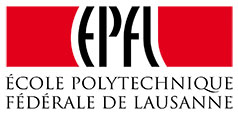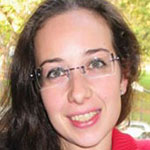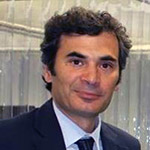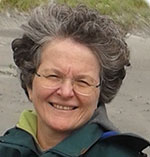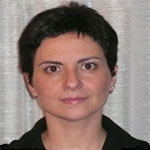SCIENTIFIC ACTIVITY
Anders Hagfeldt is regarded as one of the world's leading researchers into dye-sensitised solar cells. Using various methods and new nanostructured materials, he and his research team have succeeded in substantially improving the efficiency of these third-generation solar cells. Anders Hagfeldt is regarded as a highly creative scientist who throughout his fundamental research never loses sight of the industrial application. His appointment significantly strengthens EPFL's global position in the field of solar cell research.
CONTRIBUTION TO OUR SCHOOL
The Versatility of Mesoscopic Solar Cells
In our work on solid-state dye-sensitized solar cells (ssDSSC) we have recently [1] shown that copper phenanthroline complexes can act as an efficient hole transporting material. We prepared ssDSCs with the organic dye LEG4 and copper(I/II)-phenantroline as redox system and achieved power conversion efficiencies of more than 11%. Our follow up work on electron transfer studies and device optimization will be presented at the meeting.
In our work on perovskite solar cells (PSC) we have achieved efficiencies above 20% with a mixed composition of iodide/bromide and methyl ammonium/formamidinium [2]. For cells larger than 1 cm2 we recently certified a record efficiency of 19.6% [3], replacing the anti-solvent step in the perovskite film formation with a vacuum flash treatment. With the use of SnO2 compact underlayers as electron acceptor contacts we have constructed planar perovskite solar cells with a hysteresis free efficiency above 20% [4]. Recently, we have taken the cation mixing of the perovskite film further by including the Cs+ in a so-called ‘triple cation’ composition, i.e. Cs/FA/Ma. Larger grains grown in a monolithic manner are observed and for example reproducibility and device stability are improved [5]. At the meeting we will discuss our follow up works [6] and present our champion data; up to 22% efficiency with an external electroluminescence of 4%, and an outstanding open-circuit voltage of 1.24 V at a band gap of 1.63 eV entailing one of the smallest loss-in-potential of 0.39 V ever measured for any solar cell material. Furthermore, we will report a breakthrough in stability at 85 oC for 500 h under full solar illumination and maximum power point tracking (during which 95% of the initial performance was retained).
References
[1] Freitag et al., Energy & Envir. Sci., DOI: 10.1039/C5EE1204J
[2] Bi et al., Science Advance, DOI: 10.1126/sciadv.1501170
[3] X. Li et al., Science, DOI:10.1126/science.aaf8060
[4] Correa et al., Energy & Envir. Sci., DOI:10.1039/C5EE02608C
[5] M. Saliba et al., Energy & Envir. Sci., 2016, DOI: 10.1039/C5EE03874J
[6] M. Saliba et al., Science 10.1126/science.aah5557 (2016)
INFO
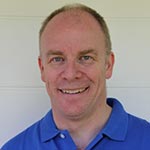
Laboratory of Photomolecular Science
Swiss Federal Institute of Technology Lausanne
